#sarcoscypha coccinea
Text



Scarlet Elf Cups (Sarcoscypha coccinea) and Ruby Elf Cups (Sarcoscypha austriaca) (indistinguishable without microscopy) are one of the few Spring mushrooms that are also edible. They have a mild taste (when overcooked, can become flavourless). They can be gently pan-fried in a little oil/ butter or used in a stew, and they make a nice addition to pasta and rice dishes, or fried eggs.
If you're out looking for them, Elf Cups enjoy wet, muddy places (often close to a stream), and they grow on fallen twigs, rotting wood, under dead leaves but can be easily spotted because of their bright red color.
#Sarcoscypha austriaca#scarlet elf cup#edible mushrooms#mushrooms#fungi#forest floor#mycology#food#info#nature photography#forestcore#foraging#ruby elf cup#sarcoscypha coccinea#some say you can eat them raw but I personally haven't tried it
176 notes
·
View notes
Text
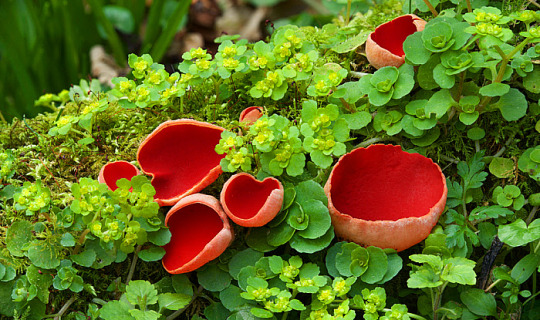
Scarlet elf cup fungus (Sarcoscypha coccinea) amongst Opposite-leaved golden-saxifrage (Chrysosplenium oppositifolium)
Photo by Robert Thompson
#Sarcoscypha coccinea#Sarcoscypha#Chrysosplenium oppositifolium#Chrysosplenium#scarlet elf cup fungus#fungus#fungi#elf cup#scarlet#green#nature
25 notes
·
View notes
Text
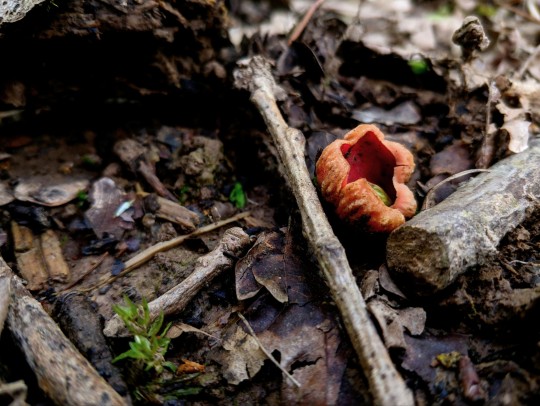
scarlet elf cup 🍄
5 notes
·
View notes
Text
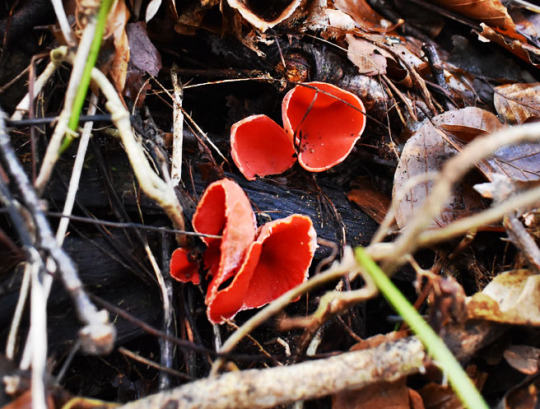

Scarlet Elfcup Sarcoscypha coccinea
#fungi#fungus#mycology#mushroom#mushrooms#cottagecore#goblincore#dirtcore#fairycore#nature#forest#forestcore#toadstool#toadstools
84 notes
·
View notes
Text
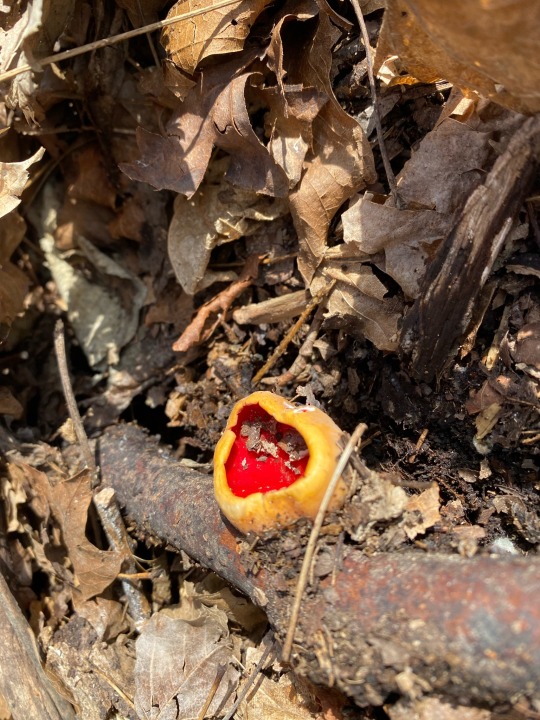
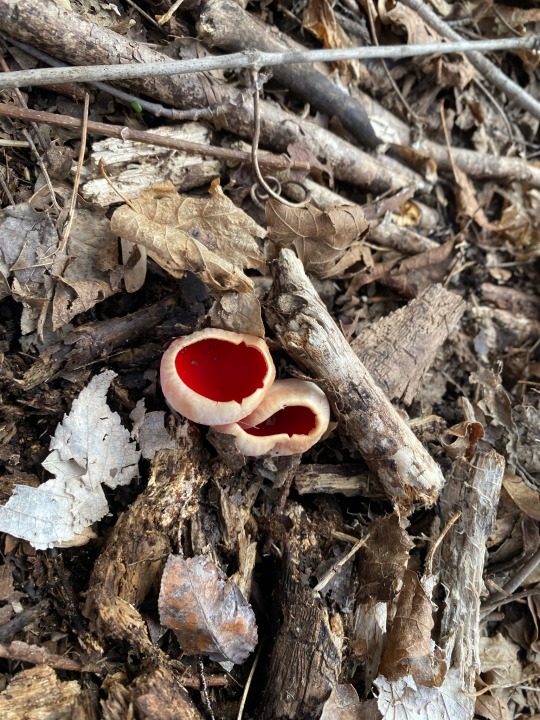


Scarlett Cup (Sarcoscypha coccinea)
#fungi#mushrooms#nature#nature photography#mushroom photography#forest floor#mycology#forestcore#photographers on tumblr#mushroom#forest#fungus#original photographers#fungiphotography#mycelium#fantastic fungi#moss#the fungus among us#mine
98 notes
·
View notes
Text
Below are 10 articles randomly chosen from Wikipedia's Featured Articles list. Brief descriptions and links are below the cut.
Bride of Frankenstein is a 1935 American science fiction horror film, and the first sequel to Universal Pictures' 1931 film Frankenstein. As with the first film, Bride of Frankenstein was directed by James Whale starring Boris Karloff as the Monster and Colin Clive as Dr. Frankenstein. The sequel features Elsa Lanchester in the dual role of Mary Shelley and the bride.
Chew Stoke is a small village and civil parish in the affluent Chew Valley, in Somerset, England, about 8 miles (13 km) south of Bristol and 10 miles north of Wells. It is at the northern edge of the Mendip Hills, a region designated by the United Kingdom as an Area of Outstanding Natural Beauty, and is within the Bristol and Bath green belt.
David Hillhouse Buel Jr. (July 19, 1862 – May 23, 1923) was an American priest who served as the president of Georgetown University. A Catholic priest and Jesuit for much of his life, he later left the Jesuit order to marry, and subsequently left the Catholic Church to become an Episcopal priest.
Denbies is a large estate to the northwest of Dorking in Surrey, England. A farmhouse and surrounding land originally owned by John Denby was purchased in 1734 by Jonathan Tyers, the proprietor of Vauxhall Gardens in London, and converted into a weekend retreat. The house he built appears to have been of little architectural significance, but the Gothic garden he developed in the grounds on the theme of death achieved some notoriety, despite being short-lived.
Courbet was the lead ship of her class of four dreadnought battleships, the first ones built for the French Navy. She was completed shortly before the start of World War I in August 1914.
The ketogenic diet is a high-fat, adequate-protein, low-carbohydrate dietary therapy that in conventional medicine is used mainly to treat hard-to-control (refractory) epilepsy in children. The diet forces the body to burn fats rather than carbohydrates.
The football match between Manchester United and Ipswich Town played at Old Trafford, Manchester, on 4 March 1995 as part of the 1994–95 FA Premier League finished in a 9–0 victory for the home team. The result stands as the joint record, with Southampton having subsequently lost by the same scoreline at home to Leicester City in 2019 and away at Manchester United in 2021, while Bournemouth also lost 9–0 to Liverpool in 2022.
M-185 is a state trunkline highway in the U.S. state of Michigan that circles Mackinac Island, a popular tourist destination on the Lake Huron side of the Straits of Mackinac, along the island's shoreline. A narrow paved road of 8.004 miles (12.881 km), it offers scenic views of the straits that divide the Upper and the Lower peninsulas of Michigan and Lakes Huron and Michigan.
Santa María de Óvila is a former Cistercian monastery built in Spain beginning in 1181 on the Tagus River near Trillo, Guadalajara, about 90 miles (140 km) northeast of Madrid. During prosperous times over the next four centuries, construction projects expanded and improved the small monastery. Its fortunes declined significantly in the 18th century, and in 1835 it was confiscated by the Spanish government and sold to private owners who used its buildings to shelter farm animals.
Sarcoscypha coccinea, commonly known as the scarlet elf cup, or the scarlet cup, is a species of fungus in the family Sarcoscyphaceae of the order Pezizales. The fungus, widely distributed in the Northern Hemisphere, has been found in Africa, Asia, Europe, North and South America, and Australia.
9 notes
·
View notes
Text
I love being on the mycology subreddit, because there are precisely two types of photo posts:
Was out in the forest today and came across some Sarcoscypha Coccinea, aren't they beautiful???
Yo I left this cheesecake in the fridge for eight months and it's orange and hairy, what diseases am I going to catch by breathing in the spores?
12 notes
·
View notes
Text

Sarcoscypha coccinea
(scarlet elf cup, scarlet elf cap, scarlet cup)
36 notes
·
View notes
Text
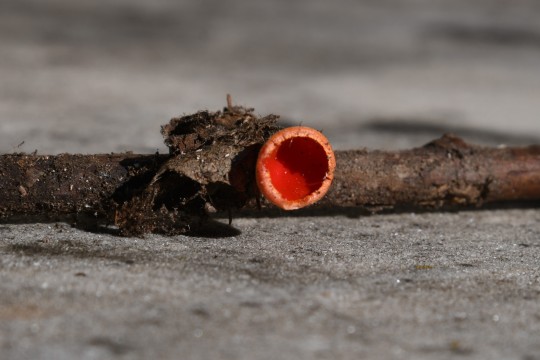
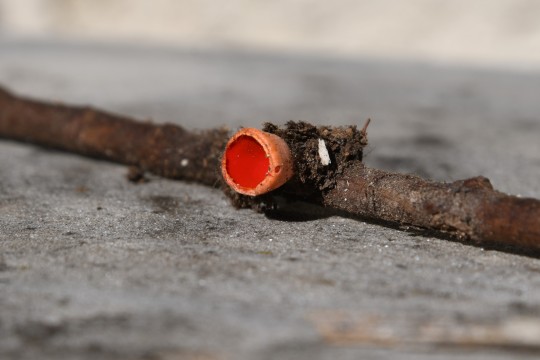
Dice google che dovrebbe trattarsi di una sarcoscypha coccinea, o coppa scarlatta degli elfi.
Io credevo che qualcuno avesse buttato una pallina di plastica nel bosco.
5 notes
·
View notes
Text







Саркосцифа алая (лат. Sarcoscypha coccinea)
0 notes
Photo

Hey there nature enthusiasts! Did you know that the scientific name of the Scarlet Elfcup mushroom, Sarcoscypha coccinea, has an interesting origin? The genus name Sarcoscypha comes from the Greek words "sarco" meaning fleshy and "scypha" meaning cup, which accurately describes the appearance of this vibrant red mushroom. The species name coccinea comes from the Latin word "coccineus" which means scarlet. These stunning mushrooms are typically found growing on dead wood during the winter months, bringing a burst of color to the otherwise muted landscape. They have long been associated with folklore and are believed to possess magical properties in many cultures. So next time you come across a Scarlet Elfcup mushroom on your woodland walk, take a moment to appreciate the interesting history behind its scientific name. #ScarletElfCup #SarcoscyphaCoccinea #MushroomLove #NaturePhotography #FungiFun #Mushrooms #MagicalMushrooms #WoodlandWalks #FungiOfInstagram #mushroomforaging https://www.instagram.com/p/Co2SHtoMoct/?igshid=NGJjMDIxMWI=
#scarletelfcup#sarcoscyphacoccinea#mushroomlove#naturephotography#fungifun#mushrooms#magicalmushrooms#woodlandwalks#fungiofinstagram#mushroomforaging
1 note
·
View note
Text

01.05.2022
First mushrooms
Sarcoscypha coccinea
0 notes
Photo
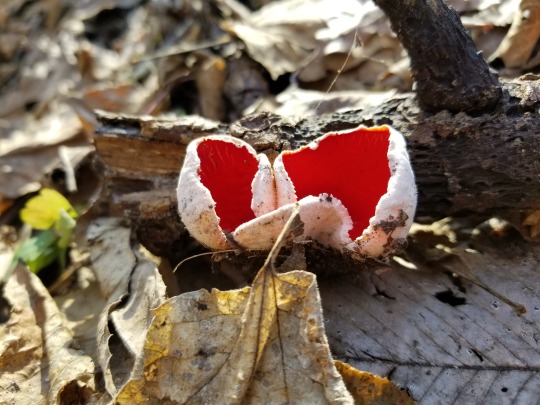
Sarcoscypha, probably Sarcoscypha coccinea, but possibly S. dudleyi, on a dead branch in Boone County, Iowa. These are a type of Ascomycete fungi often called scarlet elf cups, for their little cuplike shape and bright red color. They’re a bright sight in late winter and early spring!
45 notes
·
View notes
Photo

Fairy Baths Sarcoscypha coccinea
#fungi#fungus#mycology#mushroom#mushrooms#cottagecore#goblincore#dirtcore#fairycore#nature#forest#forestcore#toadstool#toadstools
280 notes
·
View notes
Photo
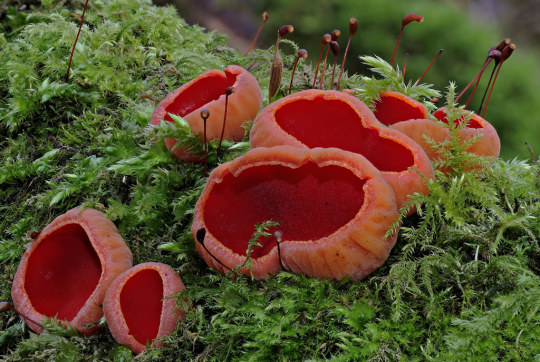
42 notes
·
View notes
Text
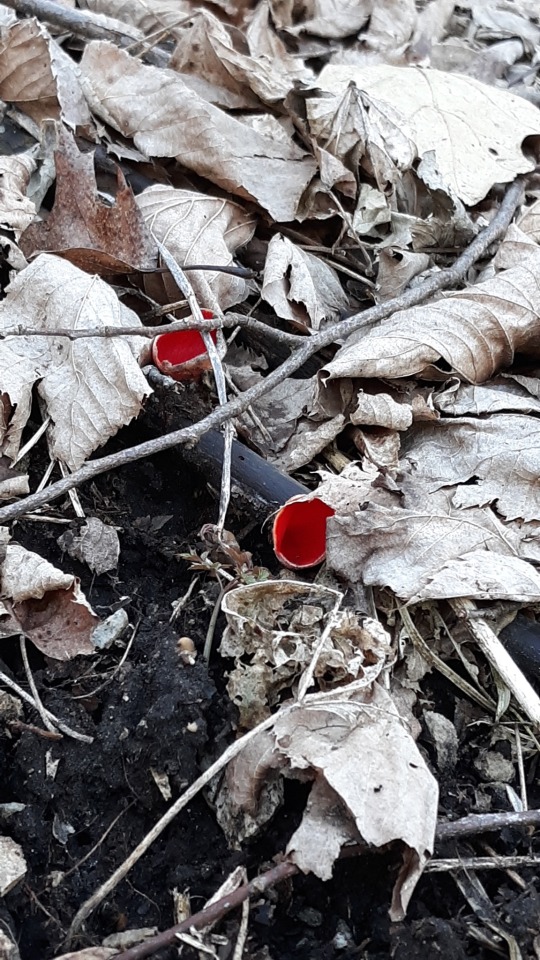

3/5/20
Sarcoscypha coccinea, or scarlet cup, is a type of fungus, widely distributed in the Northern Hemisphere, has been found in Africa, Asia, Europe, North and South America, and Australia. The saprobic fungus grows on decaying sticks and branches in damp spots on forest floors, generally buried under leaf litter or in the soil. The cup-shaped fruit bodies are usually produced during the cooler months of winter and early spring. The brilliant red interior of the cups—from which both the common and scientific names are derived—contrasts with the lighter-colored exterior. The edibility of the fruit bodies is not clearly established, but its small size, tough texture and insubstantial fruitings would dissuade most people from collecting for the table. The fungus has been used medicinally by the Oneida Native Americans, and also as a colorful component of table decorations in England. (X)
#Sarcoscypha coccinea#scarlet cup#fungus#fungi#this adventurous life#personal#adventure#explore#travel#explorer of the world#wisconsin#spring#mushroom#mushroom hunter#wild harvest
1 note
·
View note